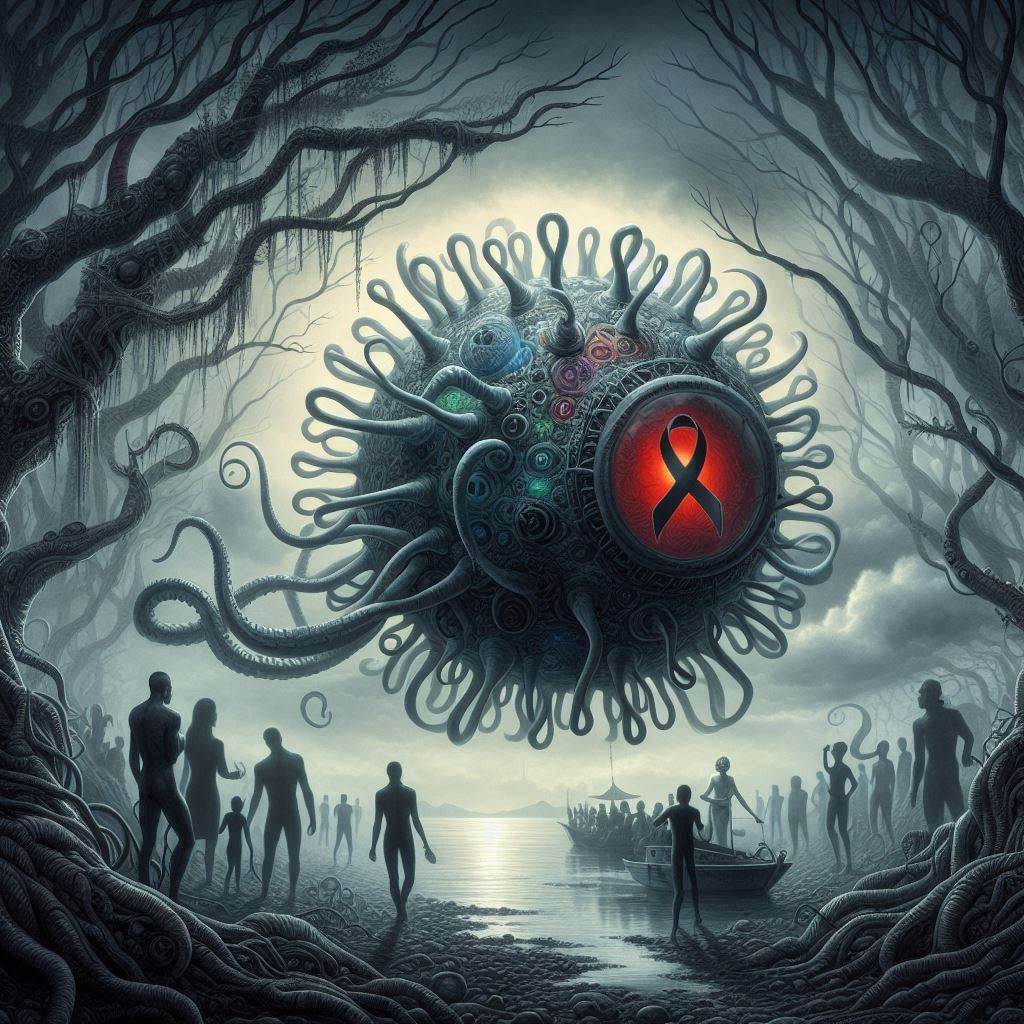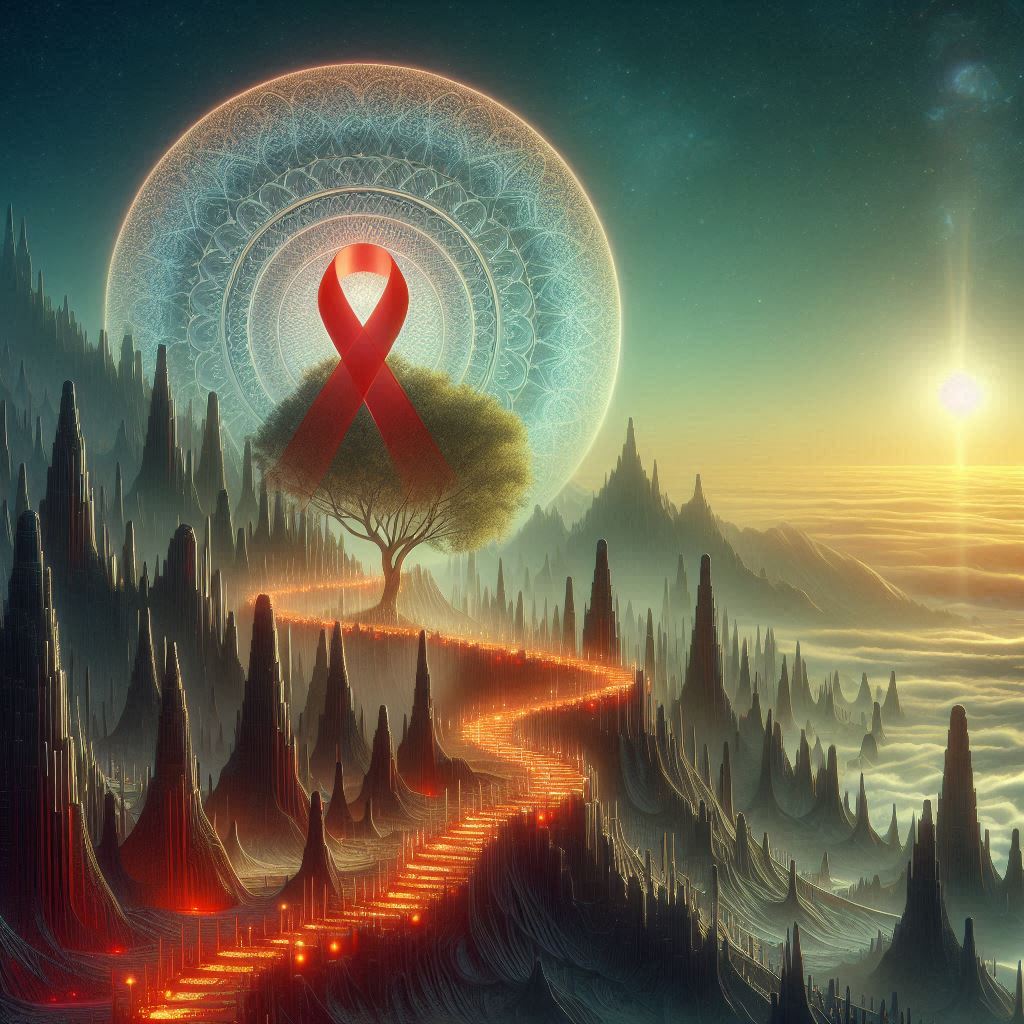In the grand narrative of pandemics, there are voices that shout and others that whisper. HIV-2 is one such whisper — subtle, quieter, and often overshadowed by its louder sibling, HIV-1. Yet, to truly answer the question “AIDS: where did it come from?”, we must not overlook HIV-2, the lesser-known but deeply significant actor in this global drama.

A Second Path: Where Did AIDS Come From, Again?
While most of the world’s attention has focused on HIV-1, another, more reserved trail of the virus was quietly unfolding in West Africa. HIV-2 emerged from a different simian source — not the chimpanzee, but the sooty mangabey, a monkey species native to that region. Through another act of zoonosis — a viral jump from animal to human — HIV-2 made its debut, likely through exposure during bushmeat hunting and consumption, just as HIV-1 had.
So, again, we return to that burning question: AIDS — where did it come from? Not from one spark, but two. If HIV-1 was a wildfire, HIV-2 was a slow-burning ember — contained, smoldering, and mostly isolated to the West African subcontinent.

HIV-2: The Gentle Phantom
If HIV-1 is a predator, HIV-2 is a shadow. It moves more slowly, infects less efficiently, and is significantly less virulent. Its transmission rate is lower, and the time it takes to progress to AIDS (Acquired Immunodeficiency Syndrome) is often much longer. Many individuals infected with HIV-2 never progress to AIDS at all.
But does that make it harmless? Not at all. HIV-2 still damages the immune system, still leads to vulnerability to infections, and still claims lives — especially where testing, treatment, and awareness are lacking.
And yet, outside of Guinea-Bissau, Côte d’Ivoire, Mali, and a few other West African nations, HIV-2 remains almost unknown. This is why global attention — and funding — has often passed it by.
The Silent Origin: A Parallel Beginning
When scientists traced the family tree of the AIDS epidemic, they found that HIV-2 shared striking similarities with SIVsm (SIV from sooty mangabeys). Genetic sequencing showed that the transmission from monkey to human likely occurred several times, but only a few of these events led to a strain that could spread among people.
Still, the question stands: AIDS, where did it come from? From multiple origins, multiple viral species, and multiple regions of Africa. HIV-2 teaches us that the story isn’t just one of overwhelming disaster — but also one of how viral threats can sometimes remain regional, mysterious, and underestimated.
HIV-2 vs HIV-1: A Tale of Two Viruses
While HIV-1 spread globally, HIV-2 stayed mostly contained within its birthplace. Why?
- Lower viral load: HIV-2 exists in smaller quantities in the blood, reducing its chances of transmission.
- Longer latency: The time between infection and symptoms is longer, sometimes spanning decades.
- Limited global mobility: West African regions where HIV-2 took hold weren’t as connected to global travel hubs as Central Africa during the early 20th century.
These factors all contributed to why HIV-2 never became a pandemic, even though it holds the same genetic tools to damage the human immune system.
The Lessons of the Quiet Virus
If HIV-1 was the alarm that jolted the world into action, HIV-2 is the soft echo reminding us that threats still linger. The fact that HIV-2 remained largely regional tells us much about viral evolution, human behavior, and transmission patterns. And it reshapes our understanding of AIDS: where did it come from? It didn’t come from one place or one moment — it came from multiple simian sources, multiple human interactions, and multiple missed chances for early containment.
Don’t Ignore the Whisper
In the story of AIDS, HIV-2 might be the background hum, the faint print, the smaller flame. But it is still part of the fire. Its existence broadens the narrative, deepens our understanding, and reminds us that epidemics don’t always shout — sometimes, they whisper. And if we’re to answer the question “AIDS: where did it come from?” fully and truthfully, we must listen to both the roar and the murmur.


